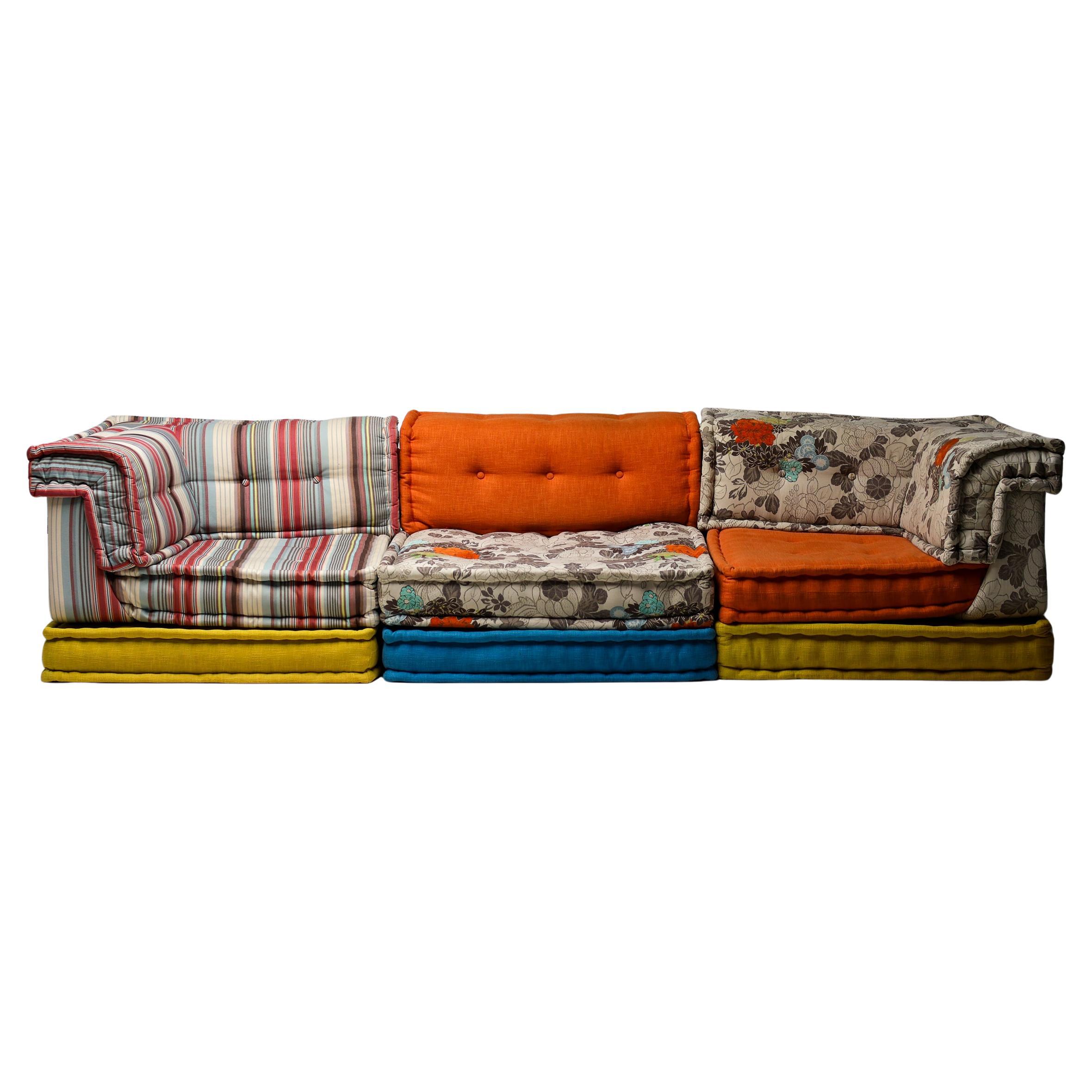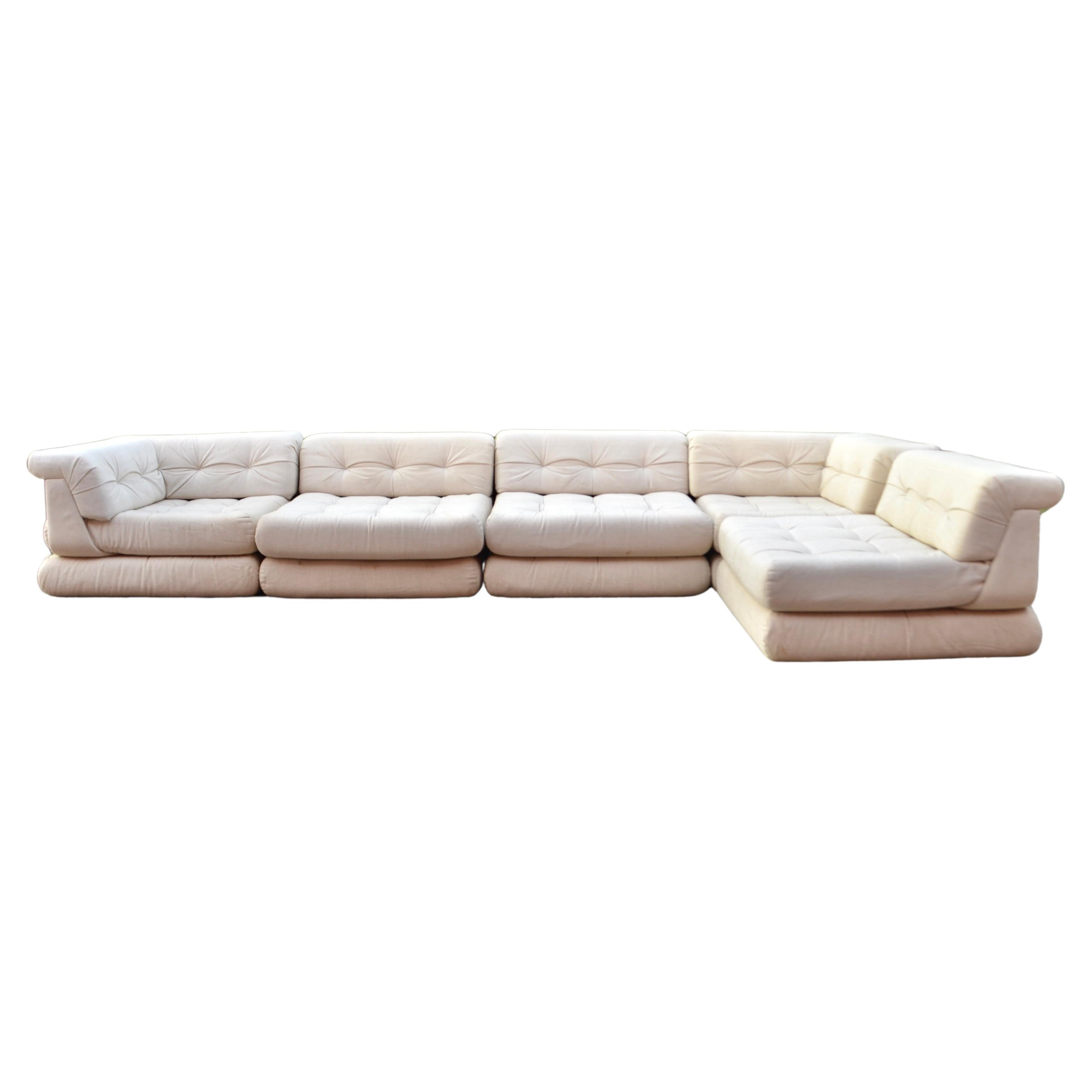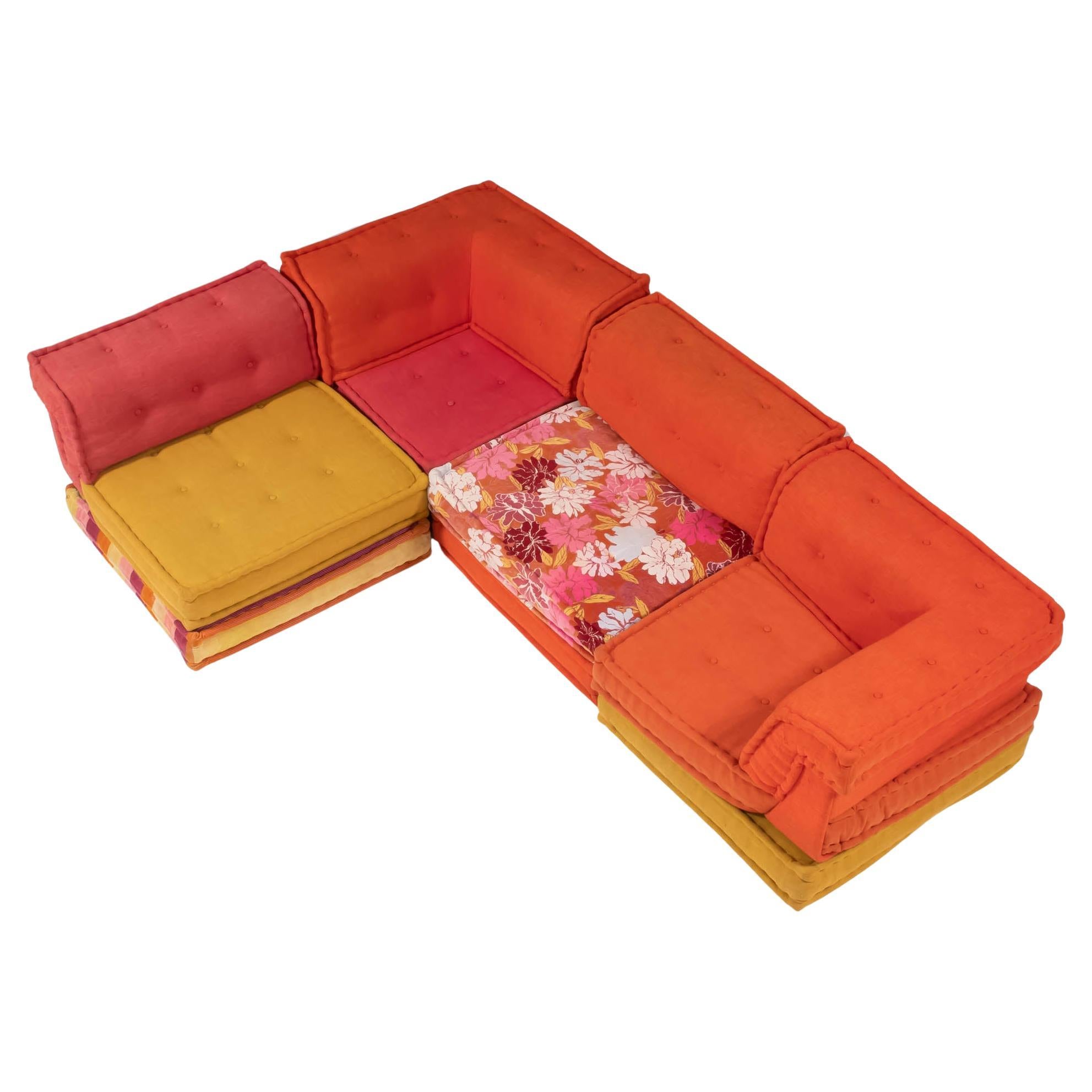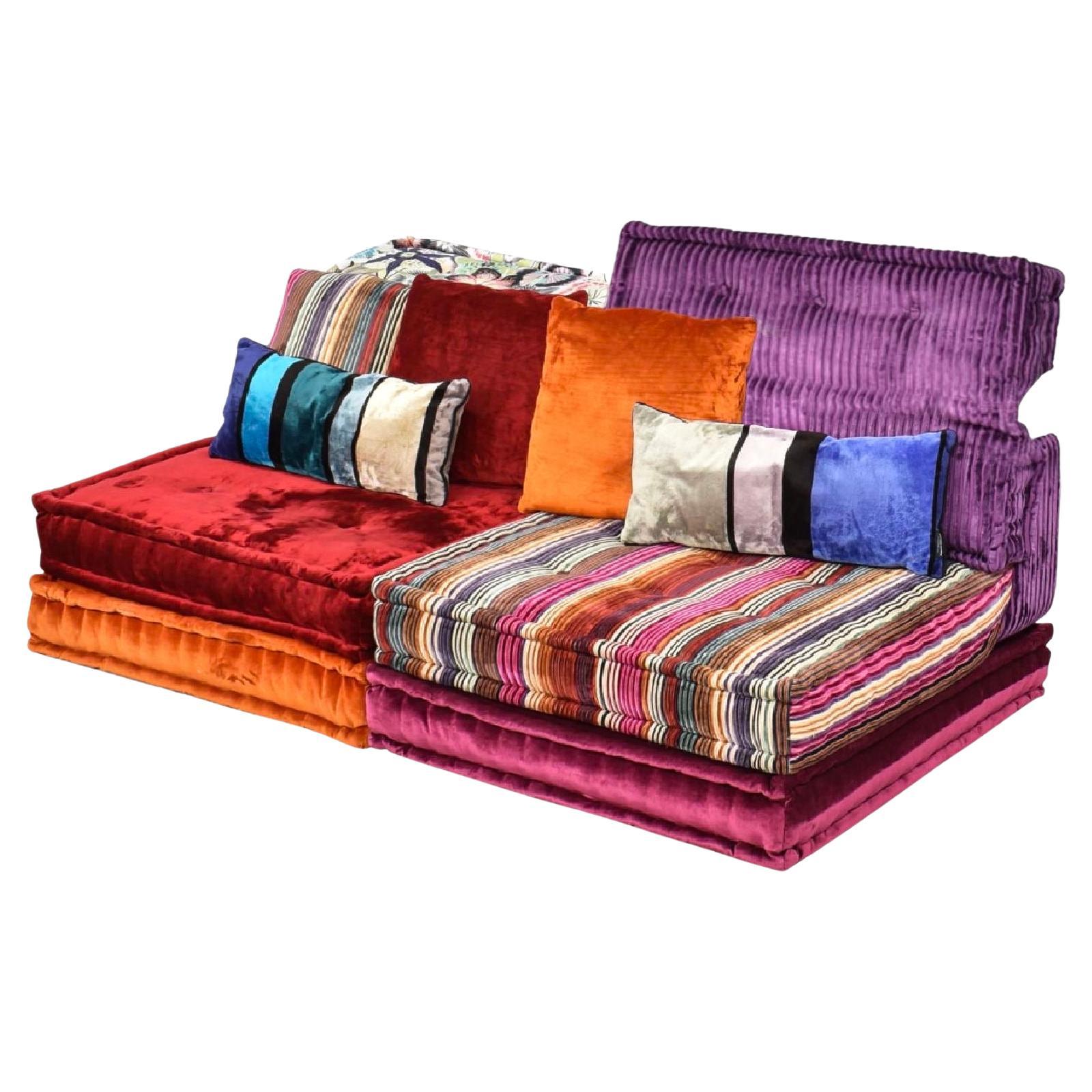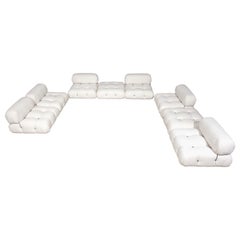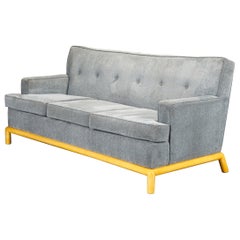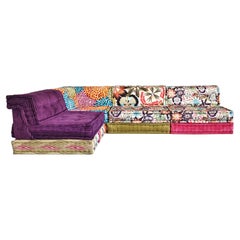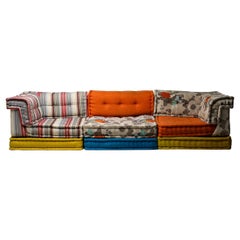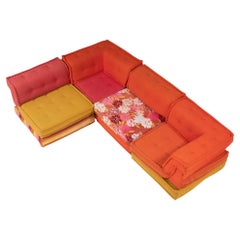'Mah Jong' 26-Piece Living Room Set by Missoni for Roche Bobois France, Signed
About the Item
- Creator:
- Dimensions:Height: 27.75 in (70.49 cm)Width: 40 in (101.6 cm)Depth: 40 in (101.6 cm)Seat Height: 14 in (35.56 cm)
- Sold As:Set of 26
- Style:Modern (Of the Period)
- Materials and Techniques:
- Place of Origin:
- Period:
- Date of Manufacture:circa 2000s
- Condition:Very good vintage condition with light age and minor wear. Ready to be used immediately in a high-end designer project.
- Seller Location:Los Angeles, CA
- Reference Number:1stDibs: LU1330232635252
Missoni
In 1953, Ottavio “Tai” Missoni (1921–2013) and Rosita Missoni (b. 1931) opened a small knitwear shop in Gallarate, Italy, paving the way for what would become an iconic style of colorful chevron knit.
Missoni began with a tracksuit, which featured zippers down the legs because, as Rosita recalls it, “Tai was too lazy to take off his shoes when putting them on.” The couple’s fashion really took off, though, once they discovered the Raschel knitting machine on a trip to a shawl factory. The machine enabled the Missonis to knit multiple colors in a zigzag pattern, a motif that would go on to become synonymous with the Missoni brand across everything from its alluring vintage day dresses and sweaters to its purses, seating and rugs.
Missoni held its first fashion show in Florence in 1967 and caused a bit of a sensation when the models’ Lurex dresses proved translucent under the lights at the Pitti Palace. Scandal aside, the show went down in history as a hit, and the Missonis soon made their debut in the United States with the help of legendary fashion editor Diana Vreeland, who gave the variegated Missoni stripe the Vogue seal of approval, saying, “Who says a rainbow has seven colors? It has many shades.” (It was also Vreeland who reportedly introduced the Missonis to Neiman Marcus president Stanley Marcus, effectively shepherding the brand to the American market.)
Missoni’s many-shaded rainbow would soon become an emblem of the 1970s fashion scene, earning the brand a permanent place in the fashion canon. In 1973, the New York Times proclaimed: “Missoni’s weaved garments have ended up universal materialistic trifles, as Vuitton sacks and Gucci shoes.”
The brand branched into the home market in 1983, with Rosita overseeing this new venture, Missoni Home, which included furniture, textiles and accessories. Daughter Angela succeeded her mother at the helm of the brand, where she served as creative director until 2021 and is currently president; her brother Luca is CEO, while her daughter Margherita was creative director of M Missoni, a modestly priced offshoot that was discontinued in 2021.
Find vintage Missoni clothing and accessories today on 1stDibs.
Hans Hopfer
German designer and artist Hans Hopfer had a profound impact on furniture design that still guides the choices we make about our spaces today. Affectionately dubbed “seating landscapes,” Hopfer’s forward-looking collections of inviting, modular low-profile seating, such as the widely revered Mah Jong sofa for Roche Bobois, allowed for optimal customized arrangements in one’s living room, an innovation that reshaped relaxation at home in a significant and lasting way.
Hopfer designed modern furniture for a manufacturer in Nuremberg during the 1960s. He met Phillippe Roche in 1970 and began his collaboration with the Roche Bobois company. When the popularity of cable television took hold in more major American cities during the 1970s, sofas and other seating became integral to contemporary living-room decor. Roche Bobois’s newly launched Les Contemporains series positioned its own sofas front and center, and it also offered plush lounge chairs designed by Mario Bellini.
Bold works from Roche Bobois during the decade included one of its most enduring and well-known pieces — the Mah Jong sectional sofa created by Hopfer in 1971. Anchored by few central elements, this modular lounge sofa can be combined or stacked, giving the buyer total freedom over its appearance and the ability to maximize comfort with its plump cushions. Inspired by a tile-based game that originated in China, the Mah Jong has been in production since its debut. It is still handmade in a workshop in Italy today.
Composed of low seating elements and large cushions, Hopfer’s Mah Jong sofa has seen some high-profile fabric updates by Missoni, Jean Paul Gaultier and Japanese clothing designer Kenzo Takada, who worked with Roche Bobois to craft fabrics emblazoned with geometrically dynamic patterns to be used as upholstery for the firm’s iconic piece of furniture.
Primarily a sculptor and painter by trade, Hopfer worked and lived between Buenos Aires, Nuremberg and Paris. In addition to the work he did for Roche Bobois — which included his Informel armchairs and sofas — he also created modular furniture for the Wiener Werkstatte, a collective of artists and designers born from the Vienna Secession art movement in Austria during the early 20th century.
On 1stDibs, find vintage Hans Hopfer lounge chairs, armchairs and sofas.
- ShippingRetrieving quote...Shipping from: Long Beach, CA
- Return Policy
More From This Seller
View All2010s French Modern Sectional Sofas
Metal
Vintage 1970s Italian Modern Sectional Sofas
Fabric
Vintage 1970s Italian Modern Sectional Sofas
Leather
20th Century American Mid-Century Modern Sofas
Fabric, Wood
Vintage 1960s American Mid-Century Modern Sofas
Aluminum
Vintage 1980s French Modern Dining Room Tables
Marble
You May Also Like
Late 20th Century Italian Post-Modern Sectional Sofas
Cotton, Satin, Velvet
2010s French Modern Living Room Sets
Fabric, Foam
Vintage 1970s French Modern Sofas
Upholstery, Fabric
Vintage 1970s French Sofas
Fabric
21st Century and Contemporary Italian Mid-Century Modern Sectional Sofas
Silk, Velvet
2010s Italian Post-Modern Sectional Sofas
Fabric, Foam

